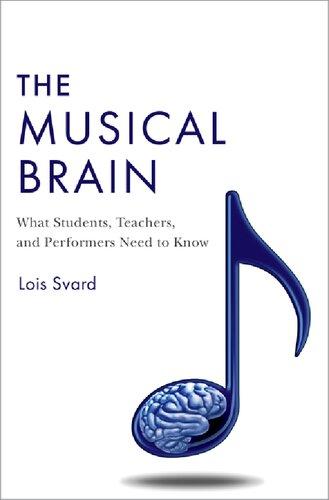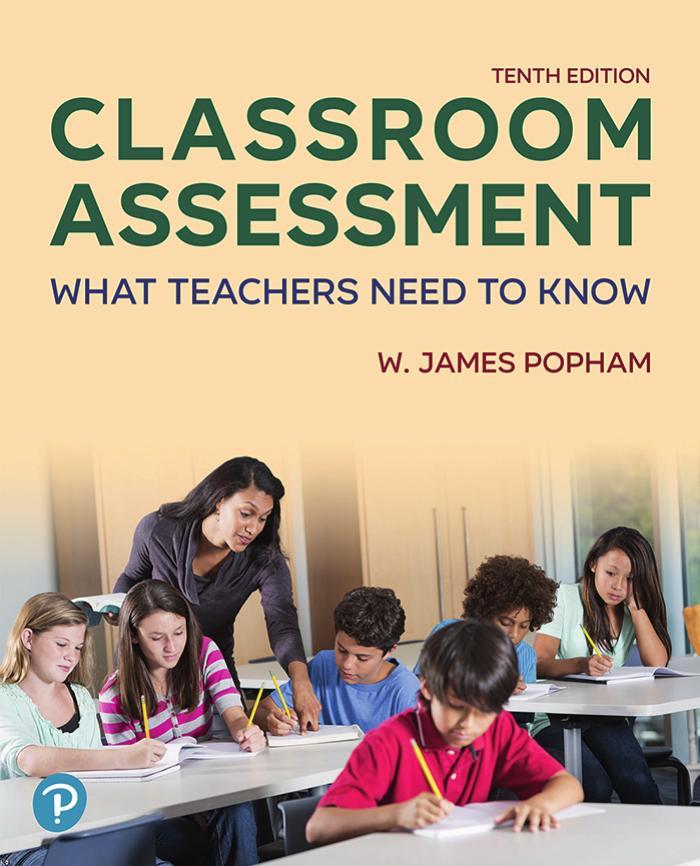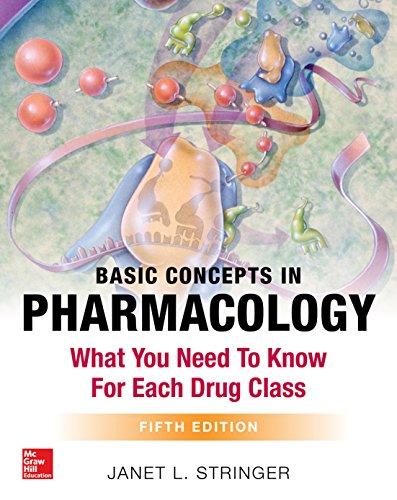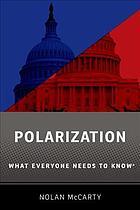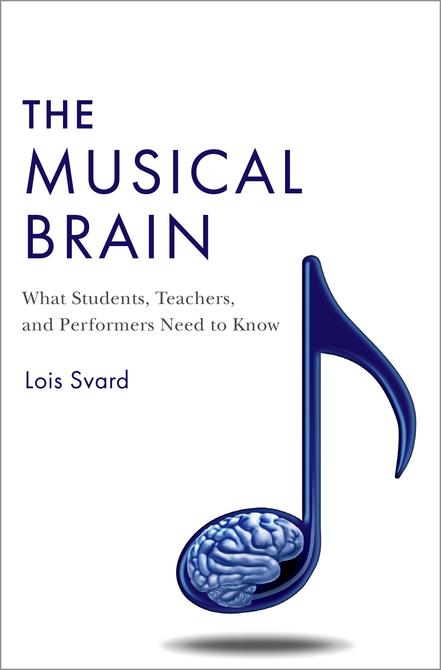The Musical Brain
What Students, Teachers, and Performers Need to Know
LOIS SVARD
Oxford University Press is a department of the University of Oxford. It furthers the University’s objective of excellence in research, scholarship, and education by publishing worldwide. Oxford is a registered trade mark of Oxford University Press in the UK and certain other countries.
Published in the United States of America by Oxford University Press 198 Madison Avenue, New York, NY 10016, United States of America.
© Oxford University Press 2023
All rights reserved. No part of this publication may be reproduced, stored in a retrieval system, or transmitted, in any form or by any means, without the prior permission in writing of Oxford University Press, or as expressly permitted by law, by license, or under terms agreed with the appropriate reproduction rights organization. Inquiries concerning reproduction outside the scope of the above should be sent to the Rights Department, Oxford University Press, at the address above.
You must not circulate this work in any other form and you must impose this same condition on any acquirer.
Library of Congress Cataloging-in-Publication Data
Names: Svard, Lois, author.
Title: The musical brain : what students, teachers, and performers need to know / Lois Svard.
Description: New York : Oxford University Press, 2023. | Includes index.
Identifiers: LC CN 2022040680 (print) | LC CN 2022040681 (ebook) | ISBN 9780197584170 (hardback) | ISBN 9780197584194 (epub)
Subjects: LCSH: Music—Psychological aspects. | Music—Physiological aspects. | Musical ability. | Music—Origin.
Classification: LCC ML 38 30 .S 948 2023 (print) | LCC ML 38 30 (ebook) | DDC 781 1/1—dc23/eng/20220826
LC record available at https://lccn.loc.gov/2022040680
LC ebook record available at https://lccn.loc.gov/2022040681
DOI: 10.1093/oso/9780197584170.001.0001
1 3 5 7 9 8 6 4 2
Printed by Sheridan Books, Inc., United States of America
Preface
We make and listen to music for the powerful effect it has on our emotions, and we can’t imagine our lives without it. Yet we tend to know nothing about the intricate networks that billions of neurons create throughout our brains to make music possible. Neuroscientists, however, have been studying musicians and the process of making music for the past thirty years and have accumulated an overwhelming amount of information about brain processing for music. Although many of these neuroscientists are passionately interested in music and some are musicians themselves, their interests and expertise are in the functioning of the brain. As one neuroscientist told me, it will need to be a musician who applies this research to practice and performance. Hence this book—written by a musician for people who love music, who make music, and who want to know more about the brain processes that not only make it possible but can help all of us to become better students, teachers, performers, or listeners.
This book is an exploration of the research relevant to how and when music study should begin; how to practice, learn, and perform; and why experiencing music together is so fundamental to human lives. It is written from the viewpoint of a pianist who has performed a great deal, taught hundreds of students with varying degrees of technical expertise and musicality, and delved deeply and with fascination into the interrelationships between neuroscience and music. Every topic covered in the book could be, and often has been, the subject of tens to hundreds of research articles and sometimes a full-length book or two. I have written earlier about some of these topics on my blog, The Musician’s Brain, but these subjects are dealt with here in more detail and discussions include more recent research.
The first three chapters lay the groundwork for considering music as a fundamental part of who we are as human beings—biological foundations for music. They explore research that shows separate brain areas for language and music, look at evidence for music dating back tens of thousands of years, and consider the many musical abilities we have at birth.
The next four chapters explore the marvelous improvisational ability of our brains to change in response to experience, learning, or injury. This is
called neuroplasticity, and it makes it possible to learn an instrument and learn music. An injured brain can even create new pathways. Cross-modal neuroplasticity, the extraordinary ability of the brain to repurpose sensory processing areas, makes it possible for blind or deaf people to become highly skilled musicians. Unfortunately, neuroplasticity can also be maladaptive, causing a movement disorder called focal dystonia that makes it impossible for a musician to play his instrument. Although neuroplasticity is the cause of this disorder, it can sometimes also be a vehicle for recovery because of the brain’s ability to adapt.
Two further chapters explore other remarkable brain processes that support music making: imagery—especially motor imagery and its significant implications for learning music, and mirror neurons—those astonishing brain neurons that fire both when we perform an action and when we see that same action being performed, thus having a major impact on learning, teaching, and performance. And the last chapter considers the thirty-yearold question, “Does music make you smarter?” While some obvious claims can be discounted, there exists a great deal of evidence to demonstrate that learning to play a musical instrument does, in fact, have cognitive benefits that last a lifetime.
Research has shown us that music was an important part of the lives of our prehistoric ancestors tens of thousands of years ago. The fact that our brains have evolved to support music-making, from the most basic level to highly skilled performance, tells us how important music is to human life. Making music isn’t just something we do; it is part of who we are as human beings.
Acknowledgments
I would like to extend my deepest gratitude to the following:
Sandra Blakeslee for introducing me to the art of science writing; Kyle Gann for his inspiring example of writing about music and musicians—and also for preparing the musical examples for the book.
The countless number of researchers who have made the exploration of neuroscience and music the focus of their work. Their fascinating research makes this book possible.
Neuroscientists Nina Kraus and Eckart Altenmüller, and cognitive psychologist Laurel Trainor for speaking with me at length about their research, for reading early drafts concerning their work and providing clarifications, and for allowing use of photos or images in the book and on the website.
Musicians Jake Heggie, Ann Schein, Nina Skolnik, Lynn Eustis, Jonathan Palant, David Vining, and Jim Litzelman for being willing to share personal experiences that helped shape the narrative of the book.
Margaret Martin, for her infectious enthusiasm about Harmony Project and how music can change the world.
Fei-hsing Hsu and Hsing-ay Hsu for sharing memories of their brother and uncle, Fei-Ping Hsu; Anne Pusey for her translations of Mandarin Chinese text into English; Than Mitchell and Ann Keeler Evans for added insights into Steve Mitchell’s life.
Holly Fischer for her marvelous images of the brain; Jim Litzelman and Lea Pearson for allowing the use of their videos and print materials on the website; the many individuals and organizations who provided wonderful photographs. Their names are credited in the photo captions.
The wonderful friends who read all or portions of the manuscript: Lynn Eustis, for her invaluable insight on all matters having to do with the voice; Kay Hooper, for sharing her vast knowledge of anatomy and her perspective on what is important to teachers; Doug Candland, for always letting me know when I had “lost my voice,” and for his enthusiasm about the adventure of book publishing; and Bill Boswell, for the many hours he spent editing with extraordinary care, great skill, and humor.
The dear MTNA friends who provided personal support—Gail Berenson and Linda Cockey, who encouraged the writing of this book long before I entertained it as a real possibility and who provided continual support throughout the process.
My Bucknell University students, Lifelong Learning students, and all the people who have attended presentations at conferences and universities over the years. They not only gave me important feedback, but their enthusiasm made it clear that the impact of brain research on music study and performance isn’t just my fascination but is shared by many.
Norm Hirschy, executive editor at Oxford, for his early enthusiasm for the book as well as for his endless patience in answering my many questions; Sean Decker and Rada Radojicic, Project Editors; cover designer Caroline McDonnell; the production team at Newgen, Koperundevi Pugazhenthi and Suma George; and copy editor extraordinaire, Timothy DeWerff. I am grateful for their care and expertise in making this book a reality.
The anonymous reviewers who made comments on an early draft of the manuscript. Their positive remarks let me know I was on the right track. Their observations and suggestions were invaluable in assisting me to explain complex ideas more clearly. I am extremely grateful to them.
Friends who are no longer here to see this book in publication but who had a significant impact on my ideas that would eventually become the book: Kay Payn, fellow explorer and dear friend, who was always eager to discuss ideas about the impact of brain research on teaching; Loren Amacher, gifted neurosurgeon, whose many comments about my early blog entries and his sharing of his experiences as a neurosurgeon provided not only useful insights, but also great humor; and Steve Mitchell, whose recovery from traumatic brain injury and return to performance was one of the early inspirations for the book, as were the many conversations in his instrument-crowded living room while we drummed on djembes.
My siblings, Anita Hellie, Renee Svard, Ron Svard, and Carl Svard, who put up with my years of piano practice at odd hours while we were growing up together, and who, with spouses Charles Hellie and Joan Svard, have been supportive cheerleaders throughout this entire project.
Nils and Katie Kresl, whose presence in my life is a source of great joy.
And most of all, my beloved husband Peter Karl Kresl, whose optimism, humor and unwavering support made this book possible.
www.oup.com/us/themusicalbrain
We have created a website to accompany The Musical Brain: What Students, Teachers, and Performers Need to Know. Links are provided to online interviews, TED talks, performances, demonstrations, articles, essays, and photos involving musicians or concepts discussed in the text. In addition, as newer research becomes available, links to that information will also be posted. The reader is encouraged to refer to the website to amplify or augment information in the text. Materials available online are indicated in the text with Oxford’s symbol .
Music and Musicians—and Why the Brain Matters
. . . music heard so deeply that it is not heard at all, but you are the music while the music lasts.
T. S. Eliot, The Dry Salvages
*
For centuries, poets and philosophers have written about the power of music, often suggesting that music is the essence of life itself, that music lives within us, that we are music. Scientists have dismissed these writings as flights of poetic fancy, or perhaps metaphor or artistic license. They have considered music to be a product of culture, and that’s the way musicians have studied music as well. But have poets and philosophers perhaps had a better sense of the true nature of music? Have they been right all along in suggesting that music is life itself?
Most of us feel compelled to engage in music in some way, either by listening to or making music. According to a 2017 Nielsen poll, the average American listens to more than 32 hours of music a week.1 That was up from 26.5 hours per week in 2016, and no doubt is much higher now following the coronavirus pandemic during which people were desperate to hear music, and many performers and organizations made performances available via streaming. Other than work or sleep, what other activity occupies so much of our time?
We listen to music for the emotion it communicates. Music can send chills or shivers down our spines. The soundtracks of movies and television heighten the emotional drama of the story. Music is an important part of every ritual, from commencements to weddings to funerals. We listen to
The Musical Brain. Lois Svard, Oxford University Press. © Oxford University Press 2023.
DOI: 10.1093/oso/9780197584170.003.0001
music when we’re jogging, driving, walking, making dinner, and studying. And listening isn’t the only way we experience music. Many of us sing in a choir or play an instrument in pick-up bands or community organizations, or we studied music as a child and sit down to play the piano or guitar from time to time. Some of us have become professional musicians, and music literally is our daily life. Our tastes in music vary widely—from classical to jazz, heavy metal, country, folk, rap, reggae, Indian ragas, or African drumming. But whatever our taste or level of engagement, music is never far from any of us.
All known societies in the world have some sort of cultural practice that could be described as music. Our compulsion to be engaged with music has ancient roots going back at least 40,000 years. Why is music so important to us? Although poets may have always written about music as part of life, scientists are beginning to change their previously held views that music is strictly a product of culture. Over the past thirty years, converging lines of inquiry and discovery in multiple scientific disciplines have led to a profound change in the way scientists think about music, and the evidence increasingly points to music as biological function. We may be as hardwired for music as we are for language—we may be born for music. The exploding field of neuroscience has paved the way for many of these discoveries.
We hear a lot about neuroscience, but what exactly is it? Neuroscience is not a single science; it is a multidisciplinary field that studies the structure and function of the brain and central nervous system. Neuroscientists come from a variety of backgrounds, including biology, medicine, neurology, computer science, chemistry, philosophy, linguistics, mathematics, and psychology. Neuroscientists basically study the impact of the brain on behavior and cognitive functions, or in other words, how does the brain produce the behaviors that we can see? Or, as we’ll explore in this book, how does our brain wiring make it possible for us to learn an instrument and make music?
There has been an explosion of interest in neuroscience and the brain in recent years. It is not unusual to open a magazine and see beautiful colored images of the brain lighting up in response to pain, empathy, marijuana, or even anger. We see programs on television exploring how the brain encodes memories and emotions and how it processes conscious thought. Current books relating to neuroscience number in the tens of thousands, many of
them becoming bestsellers. Titles tell us that if we change our brains, we can change our behavior, grades, love lives, become happier and smarter, and understand our emotions and habits. Neuroscience is now used to explain political decisions, marketing, and religion. We have become fascinated with the three-pound organ that sits atop our spinal cord and controls everything we do.
But despite our fascination with the brain, its allure often seems to be in the abstract, and we rarely think of it in connection with our personal lives. We certainly don’t think about the brain in connection with music, or how we engage with music. We still think of music as something we do rather than as a part of who we are as human beings.
Music as culture
Musicians, as well as scientists, have traditionally looked at and studied music as a cultural product—an art form. We view works of music as stemming from a certain culture in a particular time period. The music of George Gershwin, for example, with its influences of jazz, Broadway, and Tin Pan Alley, could only have been written in early twentieth-century America. On the other hand, the Japanese drums called taiko were used in ancient Japan over 2,000 years ago. Known as the heartbeat of Japanese culture, the style of taiko used today was introduced to Japan by the Chinese and Koreans in the fifth or sixth century. The djembe, the most well-known African drum, dates from the thirteenth century in West Africa, and djembe drumming, with its tradition of multiple overlapping rhythmic layers, represents the multiple layers of life in West African culture. We place particular kinds and pieces of music within a certain time frame and a specific culture.
But scientists are now suggesting we look at music as something other than as a product of time and place. Very occasionally in the past century and a half, a scientist, while thinking of music itself as a cultural product, has at least made the connection between making music and the brain. In 1881, the German physiologist and physician Emil Du Bois–Reymond suggested that complicated muscle movements, such as those involved in gymnastics, fencing, dancing, and swimming, are controlled by the central nervous system—the brain and spinal cord.2
He wrote that it is inconceivable to think of the great pianists Franz Liszt and Anton Rubinstein without considering the “iron muscularity of arm,” or to consider violinist Joseph Joachim without considering the force and speed of his bow arm. But he went on to say that the secret to the virtuosity of these great musicians was located in their central nervous systems, the roots of talent were in the gray substance of the brain, not in the hands. That gray substance refers to brain cells called neurons, and we’ll see what they have to do with making music in Chapter 4.
In 1904, the great Spanish neuroscientist and pathologist Santiago Ramón y Cajal also referred to musicians when writing about the brain. In his Textura del sistema nervioso del hombre y de los vertebrados (Texture of the Nervous System of Man and the Vertebrates), Cajal wrote that a pianist acquires the skill through years of mental and physical practice, and this could be understood by acknowledging the strengthening of existing pathways in the brain, and the establishment of new ones.3 He was speaking of neuroplasticity, or how the brain changes in response to experience and learning, even though neuroplasticity wasn’t universally accepted in human adults until the 1980s. Neuroplasticity is what makes it possible to develop musical skills.
In 1967, a Russian pianist/teacher who had been living and teaching in New York since 1949 published a short, potentially groundbreaking book that discussed the role of the brain and spinal cord in making music. George Kochevitsky’s The Art of Piano Playing: A Scientific Approach cites Du Bois–Reymond’s work, provides a historical survey of various theories of piano technique, and then lays out his argument about the role of the central nervous system in piano playing. Kochevitsky writes that “practicing at the piano is mainly practicing of the central nervous system, whether we are aware of it or not.” And “sooner or later piano pedagogy (as well as the pedagogy of any instrument) will have to accept the ideas in this book.”4 Unfortunately, his book was almost universally ignored.
Kochevitsky’s work may have come nearly a century after that of Du Bois–Reymond, but he was still ahead of his time. Today, over fifty years later, musicians and music lovers still do not talk about, or even think about, the brain in connection with making or listening to music. On the other hand, over the past thirty years neuroscientists have thought about music and the brain a great deal, and they have found studying musicians and the process of making music to be a valuable way to study and learn more about human brain function.
Music as science
There are many cultures that don’t use music notation, a visual system of symbols that represents musical sound, a set of visual instructions. But music notation is fairly standard in all Western music traditions. And while jazz improvisors usually perform without traditional music notation, the lead or fake sheets they use are a form of notation that indicates to the player all the essential elements of a tune, such as the basic harmonic structure and the melody.
Music notation is essentially a second language, and whether one is a beginner, an amateur, or a professional, the brain must process these symbols just like any other written language and translate them into motor commands in order to make sounds at an instrument or with the voice. At the same time, the auditory system is processing and monitoring the notes one is playing or singing to see if they correspond to the symbols on the page, and if not, fast corrections must be made.
Most instruments, whether keyboards, strings, winds, or percussion, require each hand to be doing something different, so precise bimanual coordination, also controlled by the brain, is very important. Add in the necessity of conveying emotion in the piece, planning the actions needed to play the piece, connecting what one sees with the spatial perception of how the body needs to move to accomplish all this, and perhaps memorizing and then recalling the piece, and it’s no wonder that neuroscientists have found music to be such a rich area for study.
Robert Zatorre, cognitive neuroscientist and professor of neuroscience at the Montreal Neurological Institute, has written: “Indeed, from a psychologist’s point of view, listening to and producing music involves a tantalizing mix of practically every human cognitive function.”5 And he goes on to say that even something as simple as humming a tune, which we all do, requires complex auditory processing, attention, memory storage and retrieval, motor programming, and sensory-motor integration. So one must surely ask, if even listening to or humming a tune is such a complex cognitive activity, why are we all able to do it? And how are we able to master the much more challenging skill of playing a musical instrument or singing at a professional level?
Since making music requires the coordination of sensory and motor processes and is so cognitively demanding, many neuroscientists have studied musicians to learn more about the organization of the human brain. And
because long-term practice of a musical instrument causes both functional and structural changes in the brain, they can learn about neuroplasticity in all humans by studying musicians. The books that suggest you can change your brain in order to change your life are about neuroplasticity, the ability of the brain to change in response to experience or learning. Musicians have played an important role in helping neuroscientists learn more about how neuroplasticity functions in the human brain.
Brain networks for music
There is no single musical center in the brain, no “link” to Beethoven’s “Für Elise” or your favorite pop song. Instead, there are multiple networks spread throughout the brain that process the different components of music. Over the past thirty years, neuroscientists have studied these networks, from those supporting the basic processing of pitch, rhythm, and melody, to more complex cognitive processes such as perception, sight-reading, emotion, improvisation, and memory. The neural substrates (circuitry) underlying some cognitive processes such as perception, memory, or emotion have been found to be the same as those used in our lives in general.
But other networks have been found to be used specifically for music. Think of “Happy Birthday.” In the first “Happy birthday to you” the interval from “day” to “to” is a fourth. As you sing the second “Happy birthday to you,” that interval increases to a fifth. And the third time, the interval from “Happy” to “birthday” stretches to an octave. Those kinds of pitch intervals, and the brain circuits that process them, are not used in language or for anything else in our lives. Language, even tonal languages in which pitch conveys meaning, such as Mandarin Chinese, have a very narrow range of pitches compared to music. So the brain networks used to process pitch intervals are unique to music.
Similarly, the complex rhythmic structures that we find in music have no equivalent in language, whether African drumming with its multiple rhythmic layers, Eastern European folk music with its alternation of accents in 3 and 2, or Paul Desmond’s “Take Five,” accented in groups of five and made famous by the Dave Brubeck Quartet. The brain circuits that process these complex rhythmic structures are as unique to music as are the circuits for pitch intervals. This suggests to researchers that music has functional or biological roots. And a great deal of recent research is focusing on the biological origins of music.
Imaging technology and music
Imaging technology, such as functional magnetic resonance imaging (fMRI), positron emission tomography (PET), and electroencephalography (EEG), has been instrumental in identifying areas in the brain that process musical elements such as pitch or rhythm. But it has also made it possible to look at questions that were, at one time, subject only to speculation.
In 2005, Lawrence Parsons, then at the University of Texas in San Antonio, scanned the brains of pianists in a PET scanner as they played the third movement of the Italian Concerto by J. S. Bach, and as they played major scales, all from memory.6 While several brain areas were activated both in the playing of Bach and major scales, including the primary motor cortex and auditory areas, other areas supported either the concerto performance or the playing of scales, but not both.
Different kinds of jazz improvisation also activate different parts of the brain. In 2008, Charles Limb and Allen Braun, National Institutes of Health, scanned the brains of jazz musicians in an fMRI using a specially designed keyboard with no metal parts.7 The jazz musicians improvised both to a C major scale and did a free improvisation. Brain scans showed a difference in activity in the two kinds of improvisation. Limb and Braun suggest that these findings may begin to provide a cognitive context for understanding creative activity in the brain. [Limb presents this study in an entertaining TED talk that you can link to on the companion website, item 1.1 .]

As we will see later in the book, our brains reflect our own individual auditory experience, so the brain of a classical pianist will look a bit different from that of a jazz pianist, a trumpet player, or a singer. The instrument we play, the kind of music we play or sing, and the amount of practice we engage in all have an impact on our brains. And it’s not just motor and auditory activation that can be seen on a brain scan. How you process music emotionally can also be seen. The neurologist and best-selling author Oliver Sacks had his brain scanned at Columbia University Medical Center in 2009 while listening to music of Bach, which he said he loved, and Beethoven, which he did not. The music of Bach not only activated the many regions of the brain that have to do with the processing of the music itself, but also activated the amygdala, which is crucial to processing emotions. Beethoven, whose music Sacks was adamant about not liking, showed no activity in the amygdala. His brain did not react emotionally to Beethoven. Curiously, when an excerpt was played that Sacks did not know and could not identify as Bach or Beethoven, the amygdala in his brain lit up, knowing it was Bach.8 [A video in
which Sacks and a researcher discuss this study can be seen on the companion website at item 1.2 .]
Lesion studies and music
The oldest scientific technique for studying brain function, used long before imaging, and a technique still important and used frequently today, is to study individuals who suffer from some kind of neurological anomaly— brain-damaged individuals.
Isabelle Peretz, director of the International Laboratory for Brain, Music and Sound Research (BRAMS) at the University of Montreal, speaks of this patient-based approach as a kind of reverse engineering.9 In healthy subjects, functional and neuroimaging studies have shown involvement of networks for processing music in both hemispheres of the brain in the temporal, frontal, parietal, and occipital lobes, and in sub-cortical networks (see Figure 4.3 in Chapter 4).
Studies of patients with lesions or other neural disorders can show more clearly which networks are directly related to music processing. Peretz suggests one can learn more about a complex system when it malfunctions than when it is running smoothly—reverse engineering. And neuroscientists and cognitive psychologists have learned a great deal about the neurobiological basis of music by studying individuals with various kinds of brain damage. This damage can be acquired or congenital and often leaves either language or music intact, but not both, suggesting that music and language are processed in music-specific or language-specific networks of the brain. Finding these music-specific networks lends support to the idea that music has biological roots.
Aphasia is a language impairment affecting one’s ability to produce or comprehend speech, and sometimes the ability to read or write. It is most often caused by left-hemisphere stroke but can also be caused by brain tumors or a traumatic brain injury affecting the left hemisphere, primarily Broca’s area, related to the production of speech, or Wernicke’s area, responsible for the
Aphasia
comprehension of speech. It can range from mild, having difficulty finding the names of objects—to severe, being totally unable to speak.
Aphasia does not affect intelligence, nor does it affect the ability to make music. In fact, therapists have known for some time that aphasic individuals can often sing sentences which they cannot speak. Neurologic Music Therapy uses elements of music such as rhythm, melody, and dynamics to treat aphasic individuals.
Neuroscientists often cite the Russian composer Vissarion Shebalin (1902–1963) as an example of an individual who was highly functioning in music even after losing his ability to speak. Although today we don’t tend to know Shebalin or his music, he was appointed director of the Moscow Conservatory in 1942, and his music was well known at the time. In the late 1940s, Shebalin, Sergei Prokofiev, and Dmitri Shostakovich came under attack by the Communist Party of the Soviet Union for deviating from the party line in their training of young composers.
Shostakovich’s and Prokofiev’s struggles with the Soviet government have been well-documented; Shebalin’s have not. But after several years of trying to defend his students and colleagues from government attack, Shebalin suffered a left-hemisphere stroke in 1953 that left his right side paralyzed and left him aphasic. (The left hemisphere controls the right side of the body; right hemisphere controls the left side, so a left-hemisphere stroke paralyzes the right side of the body.)
This was followed by another stroke in 1959. However, he continued to compose several works before his death, including two string quartets; a trio for piano, violin, and cello; a sonata for violin and viola; and several choral works—writing out all the scores with his left hand. He obviously was hearing the music in his mind, or he wouldn’t have been able to notate it. Shebalin completed his Fifth Symphony just a few months before his death from a third stroke in 1963. Although this work has not become a part of the standard repertoire, Shostakovich called it “a brilliant creative work, filled with highest emotions, optimistic and full of life.”10
A composer with whom we are more familiar, Maurice Ravel (1875–1937), is often cited as suffering from aphasia, but his is a more problematic diagnosis. The neurologist R. A. Henson wrote in 1988, and others have written more recently, about the difficulty in diagnosing Ravel’s neurological issues. Although he had symptoms suggesting aphasia, neurologists have suggested frontotemporal dementia, Alzheimer’s disease, and
Creutzfeldt-Jakob disease, and the jury is still out on his exact neurological disability. But nonetheless, even after he lost his ability to speak and to compose music, he retained his ability for auditory imagery and was able to hear music in his mind.11
Amusia
The reverse of aphasia is amusia, sometimes called tone deafness and described as an inability to process pitch accurately, whether perceiving or producing pitch. But the processing of musical rhythm, timbre, or emotion can also be affected. When rhythm is affected, it is called beat deafness, the inability to synchronize to a beat. But while music processing is affected, amusics can speak and understand speech perfectly well.
Amusia can be either congenital or acquired, usually as a result of stroke. In a ten-year study with a sample of 20,000 congenital amusics, Isabelle Peretz found that congenital amusia, present from birth, affects only 1.5 percent of the population and that in 46 percent of those cases, a first-degree relative also has amusia, suggesting a genetic basis. Acquired amusia as a result of stroke affects one to two thirds of stroke patients. Despite many people claiming to be “tone deaf” or to lack a sense of rhythm, the actual incidence of amusia in the general population is extremely small.12
In his book Musicophilia, Oliver Sacks relates his own experience with amusia. Sacks writes that while listening to a Chopin ballade on the radio, the pitch began to disintegrate and eventually sounded like “toneless banging.” Rhythm was not affected, however, and he could still recognize the Ballade by the rhythm. A similar experience followed a few weeks later—this time when he was playing a Chopin mazurka on the piano. But this time, it was accompanied by zigzag patterns in half of his visual field. He realized he was experiencing a migraine aura. This strange reaction to music did not affect his speech or the sounds of others’ speech—only music that he was listening to or himself playing.13
And in at least one case, fifth-grade teacher Margaret Haney developed amusia due to a viral encephalitis infection in one tiny portion of her brain. Having sung all her life, she found that she was suddenly unable to produce pitch accurately while she was trying to sing to her students. [A link to a video of her amazing story can be found on the accompanying website, item 1.3 .]
Brain areas causing amusia are quite different from those that cause aphasia, suggesting separate neural networks for language and music. Other kinds of brain anomalies also suggest separate wiring for music.
Musical alexia
In the opening chapter of The Mind’s Eye, Oliver Sacks writes about the strange neurological condition of pianist Lilian Kallir, described by the pianist Gary Graffman as “one of the most naturally musical people I’ve ever known.”14 Kallir was born in Prague in 1931, demonstrated musical talent early, and gave her first public performance at the age of four. She was a sought-after performer, both as a soloist and as a duo-pianist with her husband Claude Frank.
Kallir, who was particularly known for her elegant performances of Mozart, had been scheduled to perform the Mozart Concerto No. 19 in F Major, but a last-minute program switch had changed it to the 21st Concerto in C Major. She had been playing all the Mozart Concerti for most of her life, and they were etched in her memory. But since it was a last-minute switch, she opened the score to check on a few things. But when she opened the score, it was completely unintelligible. She saw the lines, the individual notes, the rhythmic patterns, but nothing made any sense to her.
As the months went by, the problem persisted. If she was tired or feeling ill, she would be unable to understand musical notation, which she had known since the age of four. If she was feeling well-rested, it was fine. But eventually, she was unable to read musical notation at all, even though she continued to play beautifully and to teach, drawing from her prodigious memory. Some years later, she began to have problems reading words.
Alexia is a reading disorder, in which an individual is unable to read, even though an alexic may be able to spell and write. It usually occurs suddenly as a result of stroke or other brain injury. But according to Sacks, “Lilian was the first person I had encountered whose alexia manifested first with musical notation, a musical alexia.”15 Perhaps this is not surprising, since Kallir was probably reading music notation before she was reading her native Czech language and certainly before learning to read English. Musical notation was a native language to her.
Musical savants
Researchers have also looked at musical savants as evidence of the separation of music and language processing in the brain and a brain specialization for music. Savants are often found in autistic individuals. They may have extremely high levels of achievement in, say, music or chess, while being of below-average intelligence, with only basic linguistic skills. “Blind Tom” (Thomas Wiggins, 1849–1908) was an African American musical piano prodigy. He was one of the best-known performing pianists in America in the nineteenth century. He reportedly knew 7,000 pieces of music and composed some compositions, but he had extremely rudimentary speaking skills.
Derek Paravicini (b. 1979) is a British musical savant living in London. Born prematurely at twenty-five weeks, he grew up blind and with severe autism. But at the age of two, he discovered the piano and began teaching himself to play. By age nine, he was playing at the Barbican Hall with the Royal Philharmonic Pops Orchestra. Paravicini is a genius at improvisation. He can play almost any piece by ear and play it in any key or style. He has his own jazz quartet, a YouTube channel, has given a TED talk, has a packed concert schedule, and has appeared on CBS’s 60 Minutes. Yet he is linguistically challenged and has trouble communicating with language, but not with music. [A link to his TED talk is found at item 1.4 on the companion website .]
Why musicians should know about neuroscience
We are fascinated by individuals such as autistic savant Derek Paravicini, who enjoy a rich musical life despite great odds. We feel sympathy for someone like Margaret Haney, a grade-school teacher who had enjoyed singing all her life and suddenly could no longer find the right pitches. But we wonder, what does this have to do with us?
We may not be able to relate to those particular instances, but they are a part of the larger neurological puzzle of how and why we are able to make music. Imaging and lesion studies have demonstrated that there are some separate brain areas for music and language. As we will see in the coming chapters, other kinds of investigations have uncovered a great deal of information about why music exists and how and why we are able to make music. Two themes run throughout this book: (1) music has biological foundations—humans are hardwired for music just as they are for language;
and (2) neuroplasticity, the extraordinary ability of the brain to change in response to learning or experience, makes it possible for us to develop to an exceptional degree the musical abilities with which we are born.
You may be thinking: “musicians have performed beautifully, often spectacularly, over the past couple of hundred years without knowing anything at all about the brain, and they will continue to do so. So why do we now need to know about the brain and music?” This may be true, but what is fascinating about neuroscience and music research is that it shows us that music is not just “something we do.” Music is fundamental to who we are as human beings. Our prehistoric ancestors were making music tens of thousands of years ago, and our brains have evolved not only to support music-making but to value it. Researchers have discovered a great deal about the brain and the process of making music that can help us learn more efficiently, teach with a better understanding of “how musicians learn,” and perform with far greater confidence. Learning about the brain adds a fascinating dimension to what we already know—or think we know—about making music and its place in our lives.
Key concepts
• Music has traditionally been studied as a cultural product.
• Since making music requires complex auditory processing, memory storage and retrieval, motor programming, and sensory-motor integration, scientists are increasingly studying music as biology to learn more about the structure and function of the human brain.
• There is no single area in the brain where music is processed. Instead, different elements of music are processed in many areas throughout the brain and vast neural networks connect these areas.
• Imaging technology and lesion studies have both been instrumental in identifying brain areas that are involved in processing music.
• Research into conditions such as aphasia, amusia, musical alexia, and musical savants suggests that music and language are processed separately in the brain.
• Discoveries in neuroscience, behavioral and cognitive psychology, archaeology, biology, and other areas are leading researchers to conclude that music has biological foundations, and that we are hardwired for music as we are for language.
